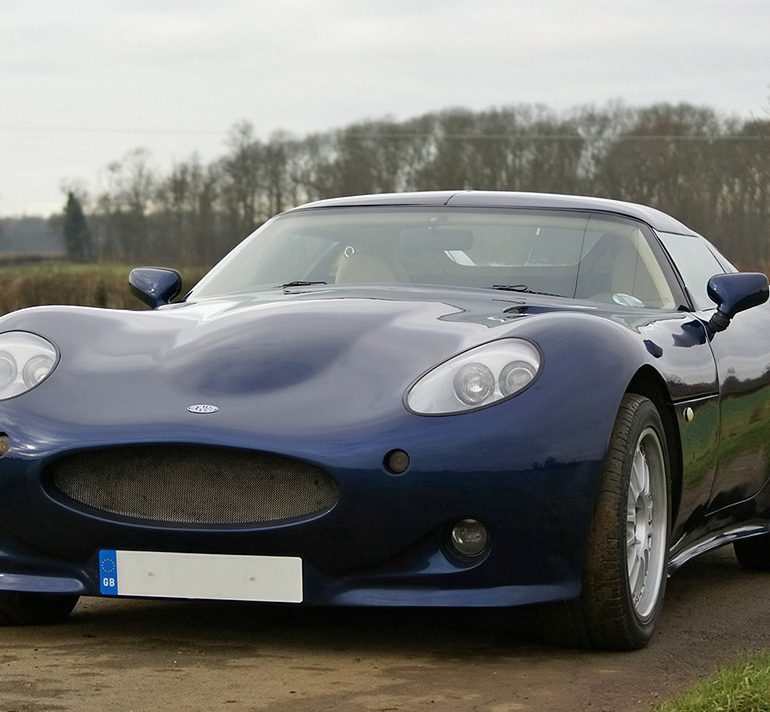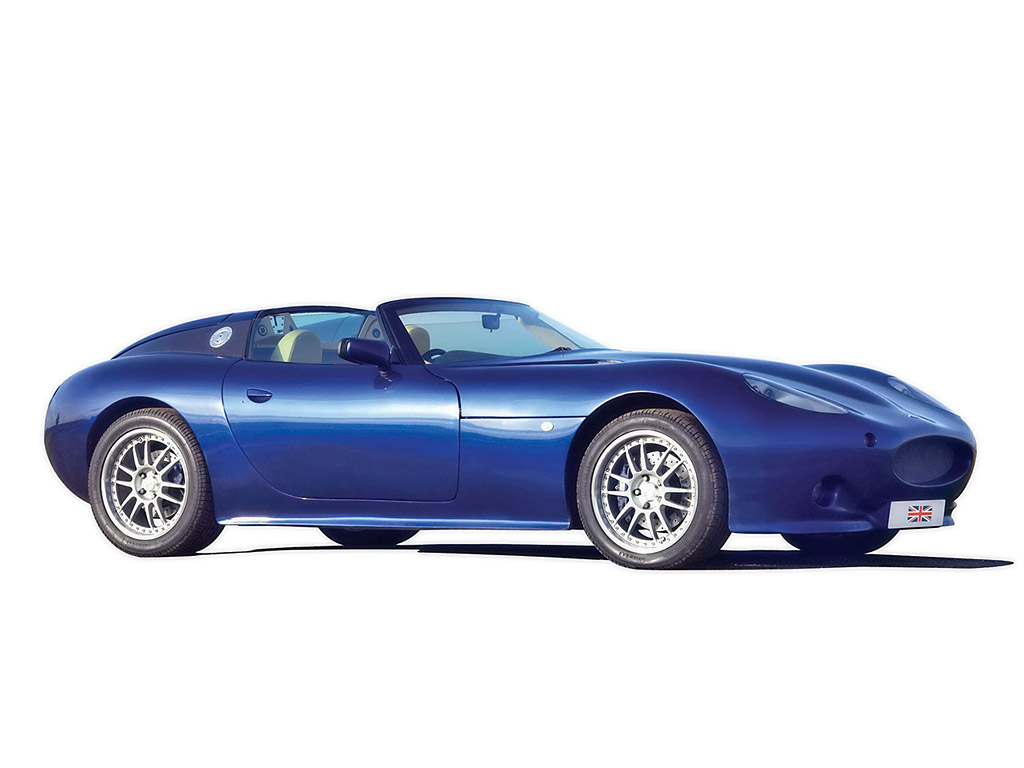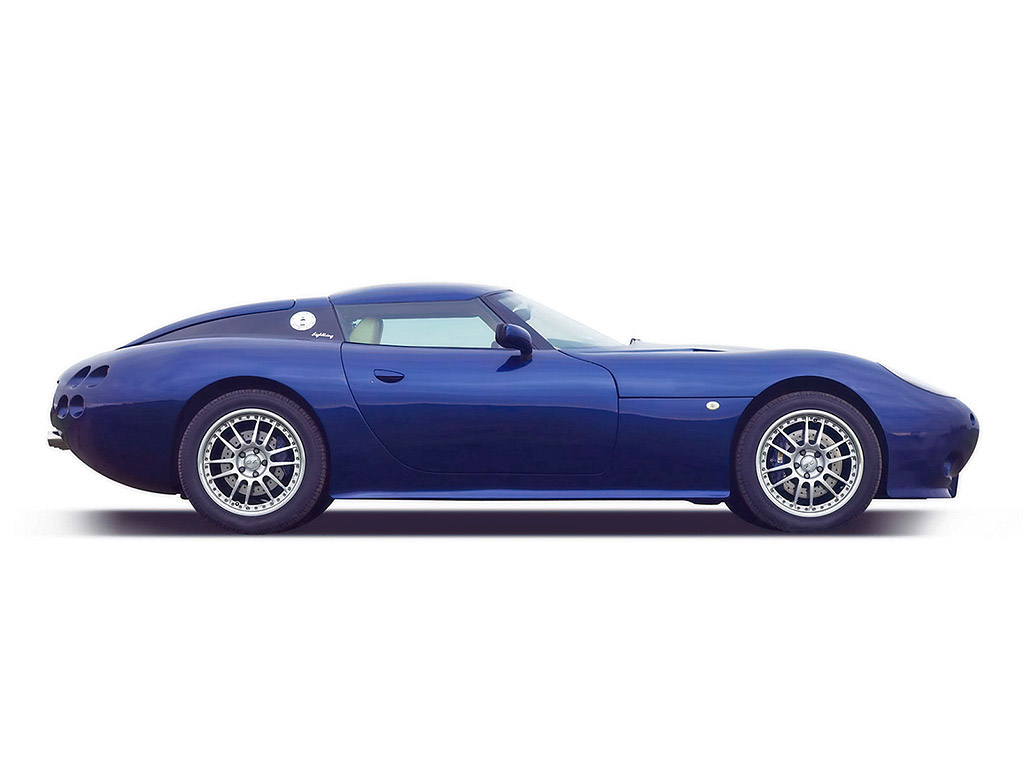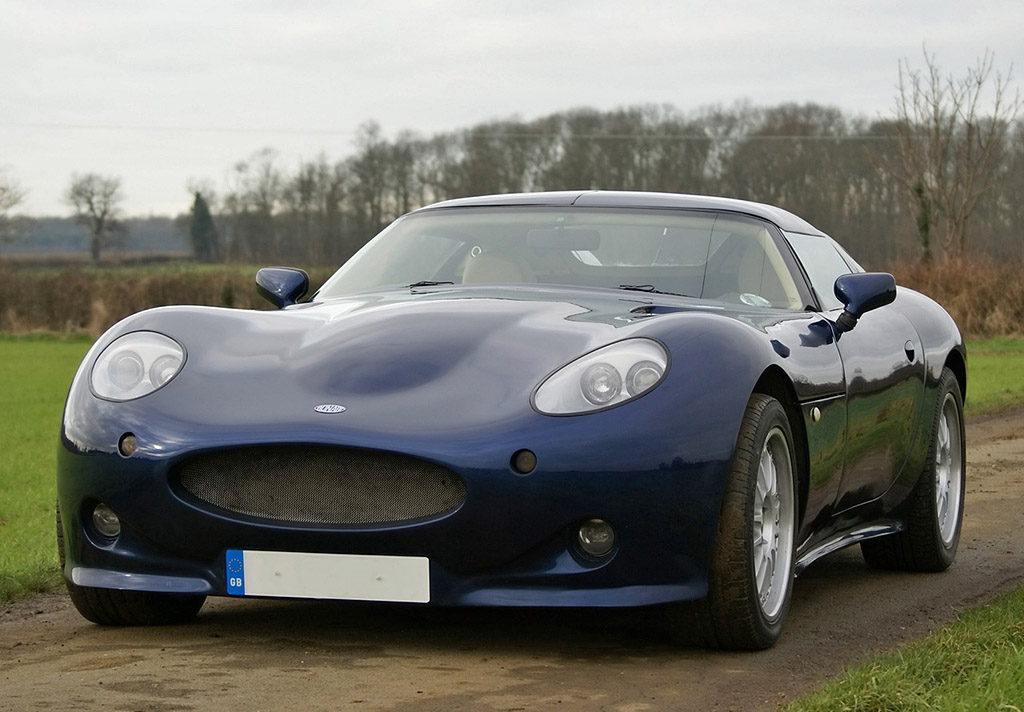2008 Lightning GT Prototype
In 2006, The Lightning Car Company set out to develop electric technology for a luxury British sports car with a view to creating a super car with outstanding presence, power & performance.
Powered by NanoSafe, the electric Lightning GT, features an impressive 700 bhp powerful acceleration and a top speed capability of more than 130mph. In short, the electric Lightning will be a difficult proposition to beat.
By combining classic, British sports car design with racing car technology and state of the art battery power & electric motor innovation, the Lightning has been designed and developed in the UK with exhilarating performance front of mind.
Whilst its head-turning looks will appeal to the most discerning of drivers, unlike other sports cars the Lightning is also easy on the conscience. With virtually no polluting emissions, this energy-efficient car will use clean technology for the ultimate green rating. Following production of several Lightning petrol prototypes, the electric Lightning GT, Sports and Extended Range versions are now available to pre-order.
Until now, battery technology has hindered electric vehicle innovation. In 2000, US company Altairnano Inc. established a research programme to create an ultra safe, high power battery using cutting-edge Nanotechnology. The result of their hard work is the NanoSafe battery.
Hi-Pa Drive is a real revolution in motor technology and it’s a British innovation to boot! With its integrated motor and drive electronics in one single unit it produces an ultra high power density – up to 20 times more than conventional systems.
The compact, energy-efficient, electric wheel motors produce unrivalled levels of torque with internal heavy-duty tapered roller bearings that can withstand heavy radial loads for robust use. Yet they achieve the power to weight ratio important for the performance sports car capability of the Lightning.
Other features include total weather proofing, total energy transfer and several levels of redundancy, so any single failure will not prevent the vehicle from operating safely.
The Lightning’s bodywork will incorporate aluminium honeycomb crushable impact cells. This composite monocoque structure uses the same technology that is used in Formula 1 motor racing to protect the driver. This material will be used in the front, rear and sides of the car s well as around the battery area
Upon braking, the car’s kinetic energy is converted to heat through friction – throwing away the energy that was previously used to accelerate. In city driving, about 30 percent of a typical car’s engine output is lost to braking.
When an electric vehicle is decelerating, it does not create friction and useless heat in order to slow down. Instead it reverses its electric motor turning it into an electric generator, creating electricity which is fed back into the battery and stored for future use. In fact any time an electric vehicle decelerates it causes the system to use the vehicle’s momentum to generate electricity.
In Detail
| submitted by | Richard Owen |
| engine | Hi-Pa Electric Motor |
| power | 522.0 kw / 700 bhp |
| f brake size | mm / in |
| r brake size | mm / in |
| gear ratios | :1 |
| top speed | ~209.2 kph / 130 mph |







